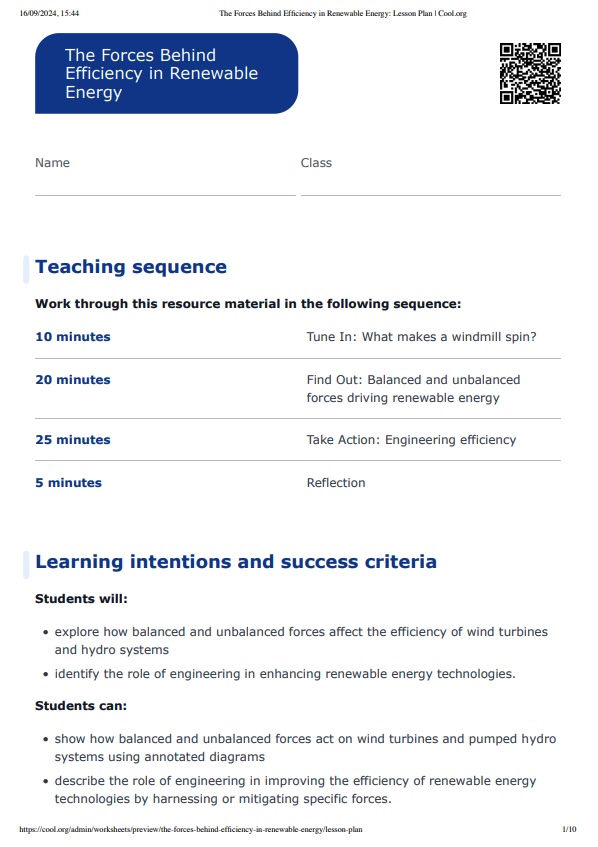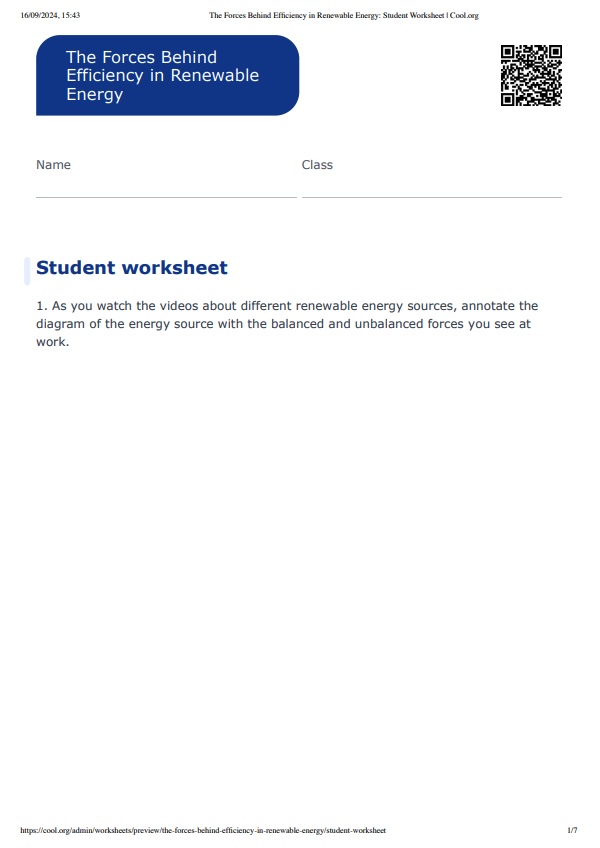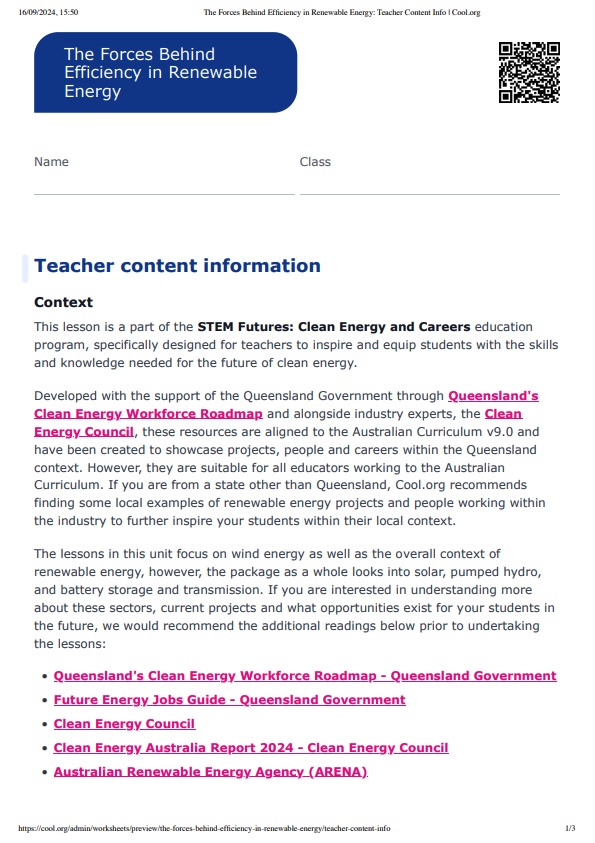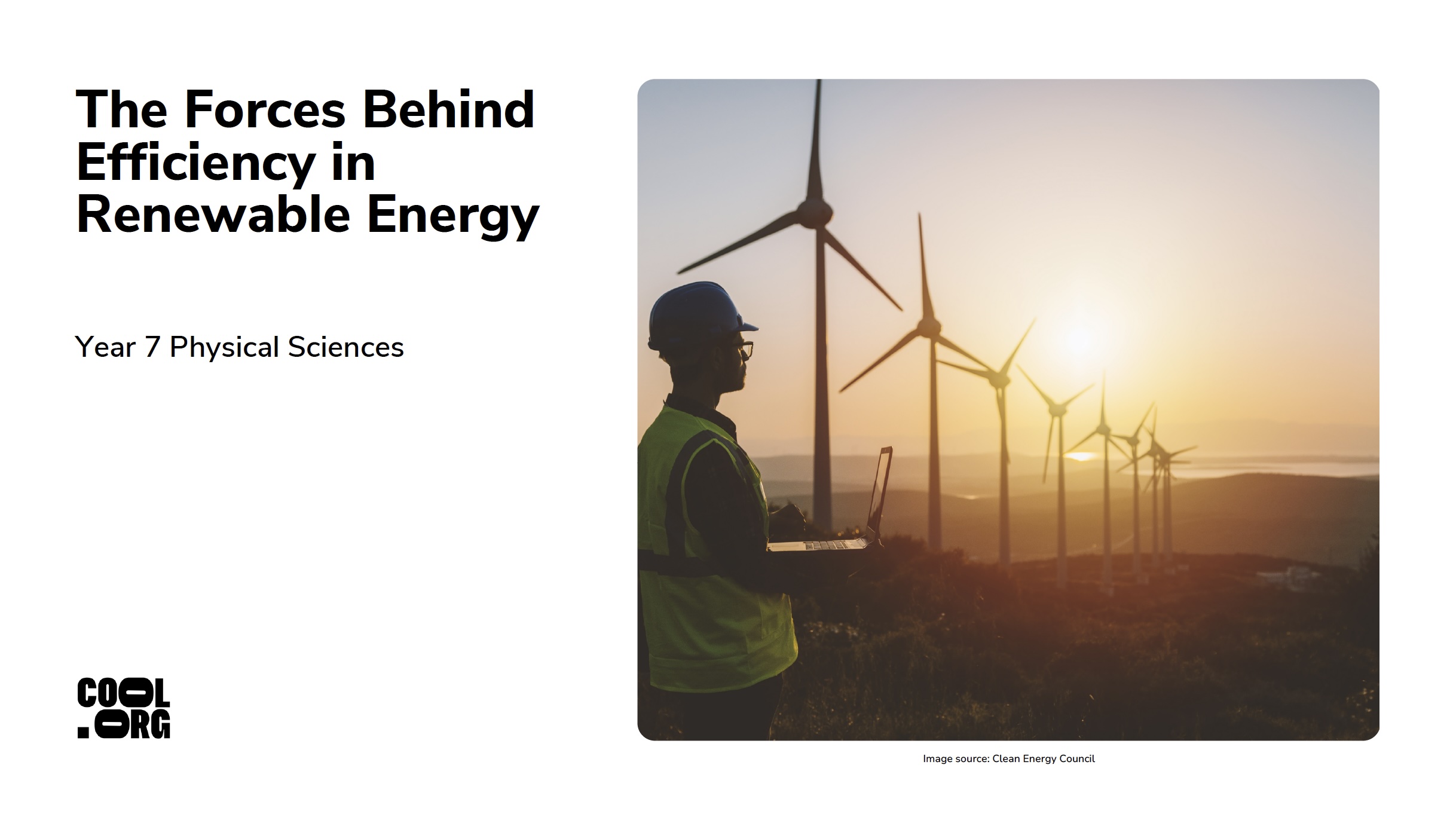Lesson summary
Students will explore the concepts of balanced and unbalanced forces, focusing on their application in renewable energy systems like wind turbines and pumped hydro, and how they impact efficiency. Additionally, students will investigate career opportunities within the renewable energy industry.
Learning intentions:
Students will...
- explore how balanced and unbalanced forces affect the efficiency of wind turbines and hydro systems and investigate the role of engineering in enhancing renewable energy technologies.
Success criteria:
Students can...
- show how balanced and unbalanced forces act on wind turbines and pumped hydro systems using annotated diagrams
- describe the role of engineering in improving the efficiency of renewable energy technologies by harnessing or mitigating specific forces.
Lesson guides and printables
Curriculum links
Select your curriculum from the options below.
Lesson details
Skills
This lesson is designed to build students’ competencies in the following skills:
- creative thinking
- critical thinking
- collaboration
- communication
- global citizenship
- problem-solving
- reflection
Curriculum Mapping
Australian Curriculum (v9.0) content description: Year 7, Physical Sciences
Students learn to:
- investigate and represent balanced and unbalanced forces, including gravitational force, acting on objects, and relate changes in an object’s motion to its mass and the magnitude and direction of forces acting on it (AC9S7U04)
- explain how new evidence or different perspectives can lead to changes in scientific knowledge (AC9S7H01)
- examine how proposed scientific responses to contemporary issues may impact on society and explore ethical, environmental, social and economic considerations (AC9S7H03).
Relevant parts of Year 7 achievement standards:
Students can represent and explain the effects of forces acting on objects. They can identify the factors that can influence development of, and lead to changes in, scientific knowledge. They can explain how scientific responses are developed and can impact society.
Australian Curriculum (v9.0) content descriptions: Related content
Year 7 Design and Technologies
Students learn to:
- analyse how force, motion and energy are used to manipulate and control engineered systems (AC9TDE8K03).
NSW Syllabus outcomes: Stage 4 Science
- describes the effects of forces in everyday contexts (SC4-FOR-01)
- recognises forces in everyday contexts (SCLS-FOR-01)
General capabilities: Critical and Creative Thinking, Digital Literacy
Cross-curriculum priority: Sustainability
Level of teacher scaffolding: Medium: facilitation of class discussion, student research and group work.
UN Sustainable Development Goals
UN SDG 7: Ensure access to affordable, reliable, sustainable and modern energy for all
- Target 7:1 By 2030, ensure universal access to affordable, reliable and modern energy services.
Resources Required
- Device capable of displaying audiovisual material
- Digital or printed copies of Future Energy Jobs Guide
- Paper turbine templates
- Student devices for individual research
- 1 x wooden chopstick per pair
- 1 x pin (sewing or drawing) per pair
Additional Info
This lesson has been developed in partnership with the Queensland Government through Queensland's Clean Energy Workforce Roadmap. Cool.org would like to acknowledge and express our gratitude to the Clean Energy Council for the expertise and advice provided in creating these resources.
Related Professional Learning
STEM Professional Learning Pathway
Quick summary: Enhance your practice with Cool.org's STEM Professional Learning Pathway. This year-long plan is designed to build your skills and capabilities in teaching STEM, ultimately transforming you into a STEM Innovator. The pathway will prepare you to integrate STEM education effectively, adapt to technological advancements and inspire students to succeed in a rapidly evolving world.





Welcome back!
Don't have an account yet?
Log in with:
Create your free Cool.org account.
Many of our resources are free, with an option to upgrade to Cool+ for premium content.
Already have an account?
Sign up with:
By signing up you accept Cool.org's Terms and Conditions(Opens in new tab) and Privacy Policy(Opens in new tab).